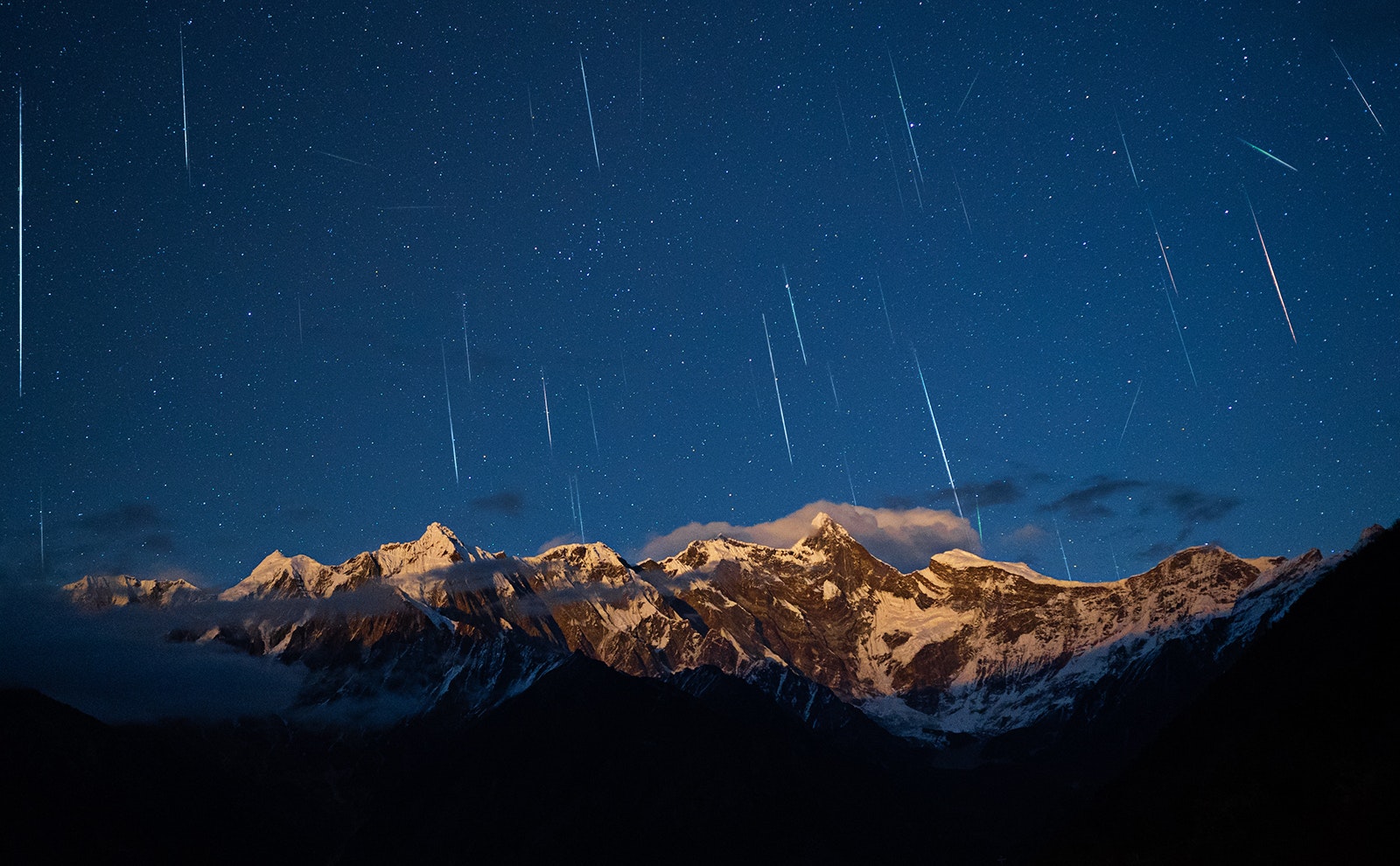The twinkling of Christmas lights adds a lot to the ambiance of the Christmas season. Even the skies above Wyoming are in the spirit of the season with two meteor showers visible throughout December.
The Geminids and Ursids are annual meteor showers that peak at year's end, and there are ways to maximize the viewing experience for both if anyone’s willing to look in the right place at the right time.
The Geminids
The first of the two December meteor showers is the Geminids. Named for the constellation Gemini, the annual shower is active in mid-December. At its peak, observers can spot an average of 120 meteors an hour.
This year, the Geminids will peak during Thursday and Friday nights.
Max Gilbraith, planetarium coordinator for the University of Wyoming Physics and Astronomy Department, says humanity has been observing meteor showers for millennia. But the Geminids are relatively recent.
“The Geminids are a newer shower,” he told Cowboy State Daily. “They only were first observed in the 1860s. They’re like a brand new shower.”
Meteor showers happen when the Earth passes through clouds of extraterrestrial debris left behind by passing comets and asteroids. Rather than falling into the Earth, Gilbraith said our planet “sweeps up” the debris, which burns up in the atmosphere.
“We will pass through that debris again every year at that same spot,” he said. “So, it's a pretty easy way to, or we can correspond I should say, between the time of year and the meteor shower. And we tend to actually be sweeping them up rather than them colliding with us.”
The Geminids got their name because they appear to originate from the constellation Gemini. Like all meteor showers, the name is an easy clue telling observers where to look to see the best show.
The Ursids
By comparison, the Ursids are somewhat less spectacular. At the peak of the Ursids, which also happens annually in mid-December, observers tend to see an average of 10 meteors an hour.
This year, the Ursids will peak between Dec. 22 and 23. The meteors will appear to emerge from the constellation Ursa Minor, better known as the Little Dipper.
Astronomers can use the regularity of meteor showers to trace their origin, or the celestial body that left the debris behind. The Ursids are the debris of the 8P/Tuttle comet, which was visible from Earth during its last close pass in 2008.
The Geminids are the debris of the asteroid 3200 Phaethon. Some astronomers believe a much larger asteroid — 3200 Phaethon — broke apart to create the Geminid debris field, and possibly other asteroids.
How To View Meteor Showers
Anyone can stare up at the night sky and have a decent chance of seeing a meteor. To maximize the viewing of December’s meteor showers, Gilbraith has some tips.
First, anyone who wants the most bang for their buck should probably choose the Geminids over the Ursids. Even veteran meteor shower enthusiasts have trouble spotting many meteors during the Ursids.
To see the most Geminid meteors, Gilbraith said it’s all about timing. The same sweeping phenomenon that creates the Geminids is a clue that reveals the best time to see the most meteors.
“The meteor showers are best observed in the early morning,” he said. “Morning corresponds to the leading edge of the earth. That's why meteor showers are best seen just a couple hours before dawn.”
Gilbraith said the best time to view the Geminids is between midnight and 2 a.m. But this is just the best time. Anyone who doesn’t want an early morning can step outside at any time during the night and spot a Geminid meteor.
Wyomingites have a distinct advantage as meteor shower observers. The best environment for viewing is a secluded spot away from the city lights, which describes a 20-minute drive from most Wyoming communities.
Once at the venue of choice, it’s best to let the eyes adjust to the darkness for 15 to 20 minutes. After that, the celestial displays of the Geminids and Ursids will be there for the enjoyment of all astronomical enthusiasts.
Andrew Rossi writes about astronomy, dinosaurs, stuff that blows up, and weird stuff. He can be reached at: ARossi@CowboyStateDaily.com
Andrew Rossi can be reached at arossi@cowboystatedaily.com.





